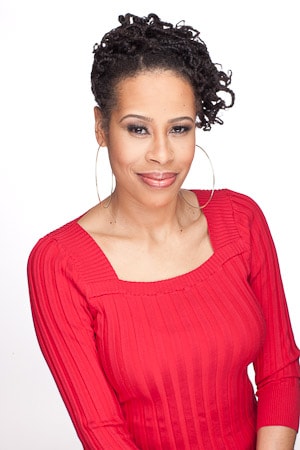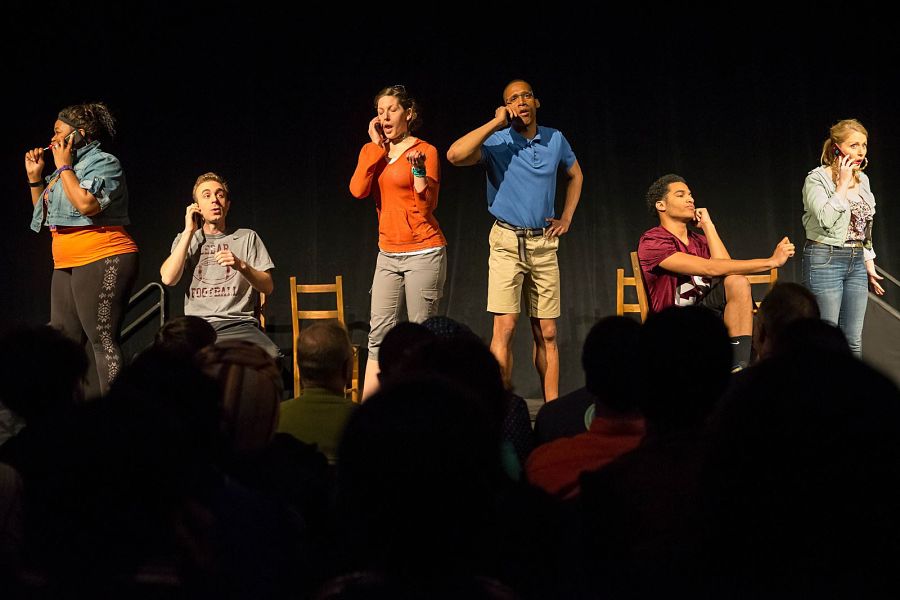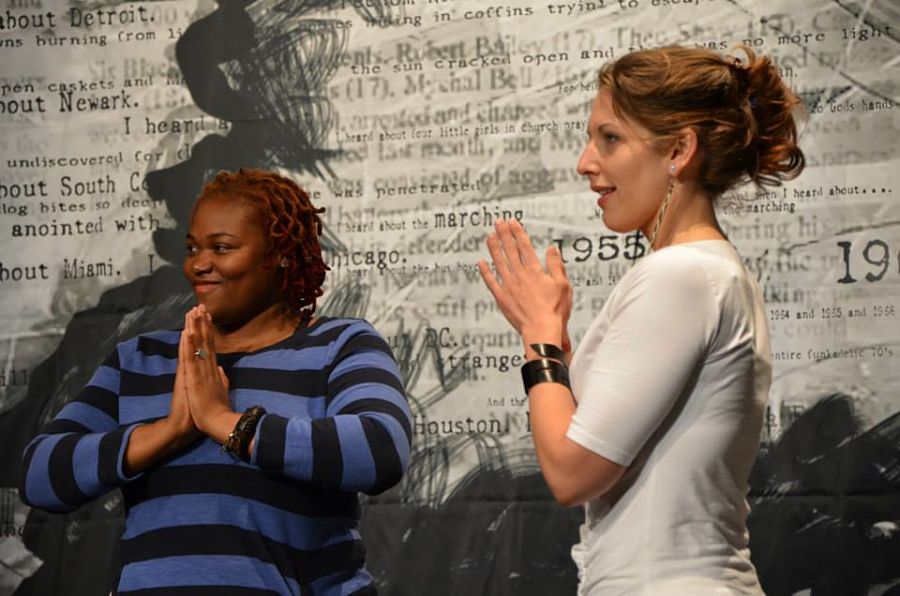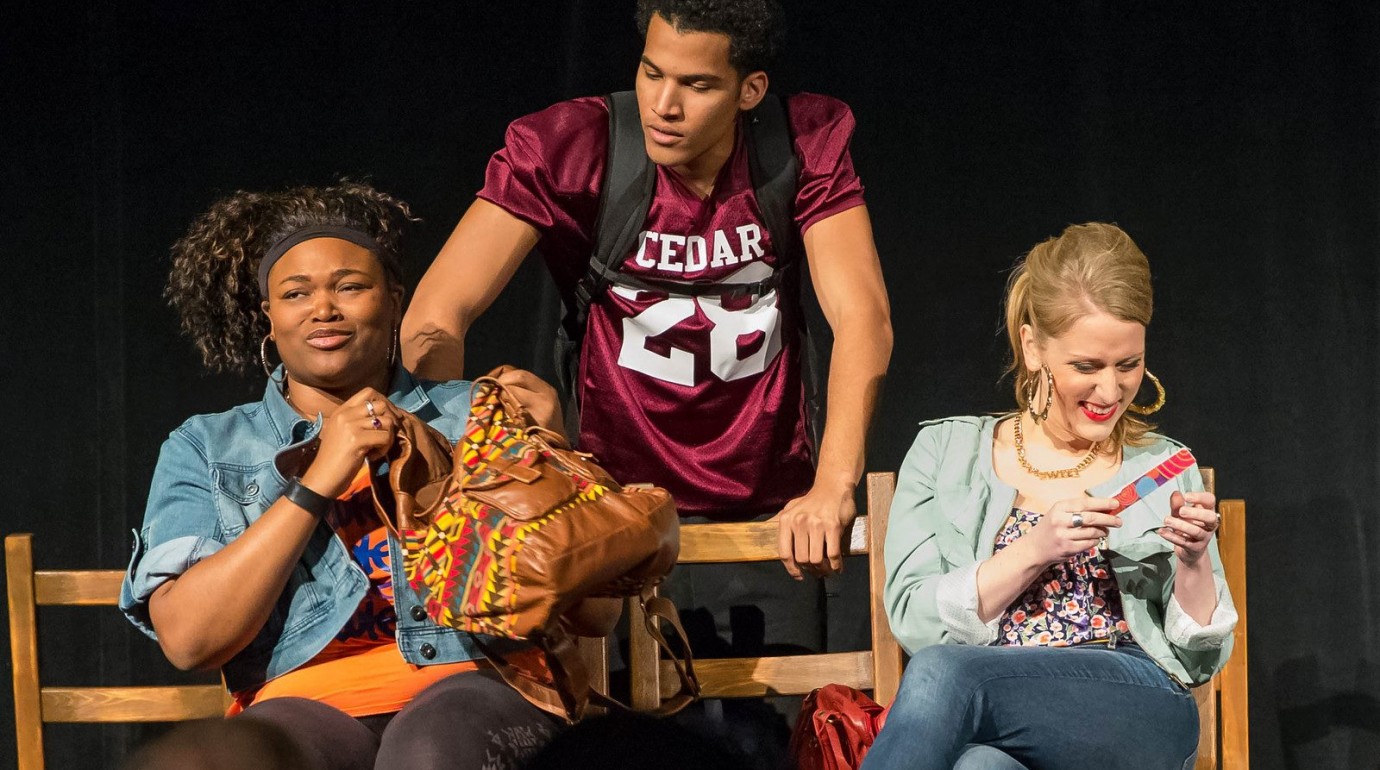NEW YORK CITY: “Southern trees bear a strange fruit / Blood on the leaves and blood at the root,” Billie Holiday sang slowly, hauntingly, in her famous 1939 recording of “Strange Fruit.” Sixty-seven years later, at Jena High School in Louisiana, six black teenagers were arrested and brought up on serious charges after assaulting a white student. The case of the Jena Six was precipitated by several other charged incidents, including nooses being hung from a tree—a prank many said was rooted in something much darker.
 In playwright Dominique Morisseau’s Blood at the Root, based on this very incident, a character declares, “It all got roots. Way somebody choose not to sit next to somebody in the lunchroom—got roots. Way somebody got problems with the flag somebody else wear on they T-shirt—got roots. Way some people talk the way they talk, or hang out with who they hang out with, or love who they love, or hate who they hate—all got roots.”
In playwright Dominique Morisseau’s Blood at the Root, based on this very incident, a character declares, “It all got roots. Way somebody choose not to sit next to somebody in the lunchroom—got roots. Way somebody got problems with the flag somebody else wear on they T-shirt—got roots. Way some people talk the way they talk, or hang out with who they hang out with, or love who they love, or hate who they hate—all got roots.”
The play, which runs at the National Black Theatre in Harlem April 20–May 15, doesn’t just take its title from the famous song of protest; it took its inspiration from it. It wasn’t even written, let alone conceived, when Morisseau decided on its name. “Sometimes a play will tell you what it is by the title,” Morisseau said. “We picked that title before I knew what I’d write.”
Indeed, the play’s route to conception and production was far from ordinary, beginning with a few theatre exercises done in a studio at Penn State University and ending with this premiere at the National Black Theatre, with several stops—other Penn State campuses, the Kennedy Center in Washington, D.C., as well as Africa, Scotland, and Australia—along the way.
It began with the sort of fortuitous meeting one would expect from the plot of a play.
“We’d seen each other one day prior on the street corner in the West Village,” Morisseau recalled of her first interaction with director Steve Broadnax, who also serves as head of Penn State University’s graduate acting program. “We ran into each other and were introduced. The following day, we ran into each other again and thought, ‘Oh, this must be fate.’”
Soon Broadnax, on behalf of the acting program, invited Morisseau to the school to write a new play specifically with a graduate acting class in mind. As part of the three-year program, Penn State students work with a playwright on a new play, take it to Africa in their second year, then produce it on the Penn State Centre Stage in their third year as their graduate thesis. In a fully collaborative process, the commissioned playwright works with the director and the students from the beginning, shaping the play over the course of two years.
Morisseau’s casting pool was a class of five graduate students: Stori Ayers, Brandon Carter, Allison Scarlet Jaye, Tyler Reilly, and Kenzie Ross. But Morisseau needed one more cast member, so undergraduate student Christian Thompson joined the cast as well.

“Because I’m an educator, I thought: I need to write something specifically for these students so that it would give them something to grow and stretch their muscles on for their senior year of acting,” Morisseau said. And so the process began with exercises, workshops, and plenty of discussions. “I listened to them, I got to know them for a week, I did exercises with them to see what their skills were as actors, what their impulses were as people, and then I tried to create characters that spoke to who they are but stretched them beyond where they are,” said Morisseau of the process.
But the discussions weren’t always easy ones, especially as they pertained to identity politics. Recalled Broadnax, “Our ensemble, when we created this, we went through a lot—of truth, of tears, of angry discussions, of passion.”
Still, the final result, which Morisseau calls a “choreopoem” (a term coined by Ntozake Shange), aims to take the language of incrimination, of privilege, of prejudice, and transform it into poetry, music, and choreography that does not obscure the underlying sociopolitical messages but rather highlights and recontextualizes them, steering them away from the straightforward black and white of the issue to instead probe the grey areas of politics and social culpability.
When the central character, a black female student named Raylynn (played by Ayers), decides it’s time for change in her high school, she sits under a tree around which only white students regularly gather. In response—as was the case in Jena—nooses are subsequently hung from that tree, causing many black students to erupt in protest. Things come to a head when six black students, including Raylynn’s brother, attack a white student and are then brought up on trumped-up charges.
The issues raised by the play are never as clear-cut as what’s right and what’s wrong, or who’s the perpetrator and who’s the victim. Amid music, choral performances, and dance, each student explores his or her proximity to the events and determines their place within a tradition of hatred and segregation: a white female who feels more at home with the black community questions her place of privilege when racial tensions rise; a black student at the periphery of two communities attempts to disappear behind the conflicts, while his white peer argues for the importance of their engagement; a black student champions change while coming to terms with her own limited perspectives; a white student victimized by the conflict struggles at the juncture between his own marginalization and privilege; and the black male student whose life hangs in the balance of the scales of a biased judicial system is nearly silenced by social restraints.
It was this kind of sociopolitical interrogation and discussion that garnered the cast and crew praise when Blood at the Root went to South Africa—praise that surprised them.
“Here’s this American story in the South, and we knew we were going to South Africa, and we were like, We don’t know if this will translate, this Southern story,” Broadnax said. Instead, he recalled, “The first thing they said was they thought the play was written for Africa.”

Obviously, in a country that had been ravaged by apartheid in living memory, audiences immediately connected to the story of conflict at the heart of the play. So did audiences at the Edinburgh Festival Fringe, where the acclaim garnered the show an invitation to Australia. It also met with praise and acclaim Down Under.
“To have such a U.S. black-and-white story become a story of South African students, become relevant in Australia, become relevant in Scotland, and invest all these different people and cultures in this story—it has just taught us how global the issues in the play are,” said Morisseau.
Said cast member Stori Ayers, “Every city we went to thought that we had written the show for them and that time, and what was reflective of what was happening in their city.” She said she found this resonance “surprising and also very eerie and unfortunate at the same time. It was great that so many people were relating to the characters and relating to the story, but to learn how deep race relations are and how complicated they are and how similar they are across the globe is sort of sad—that we’re all suffering but no one has found the answer yet.”
Though Blood at the Root was originally slated to be produced just in South Africa and on Penn State Centre Stage, the cast had pushed for the play to go even further. Said Ayers, “We noticed how close, how important, and how relevant the play was that we were doing and we didn’t want to stop doing it, and so we decided that we wanted to continue to produce the show ourselves.”
The cast pitched a campus tour to all of Penn State’s 24 campuses and ended up raising $250,000. The cast members handled the press, marketing, and production, and toured all of the Penn State campuses, along with other schools in Philadelphia, then the Kennedy Center, and beyond—all while teaching classes and earning their MFAs.
With talkbacks after every show and an education guide to go with it, Blood at the Root has proven able to reach beyond the stage and touch the roots of global modern-day issues. But the team behind the play is looking forward to reaching a new audience in New York next week.
“In a time in which we as a society are involved in an urgent conversation around equity and the demand for social justice, this piece of theatre is a necessity,” said Kamilah Forbes, producing artistic director of hip-hop urban arts organization Hi-ARTS, coproducers with the National Black Theatre.
“I’m very excited for the conversation to continue with the National Black Theatre and the platform they stand for, and then with the young people of New York, the high school students, the college students,” said Broadnax. “I hope they really come out and get to see themselves reflected on the stage.”


